- Empty cart.
- Continue Shopping
jade Plant | Buy Jade Plant Online
₨300.00
Jade Plant
Jade plants are beautiful houseplants that make them quite durable. They’re also well-equipped to last for a and long time if they’re given the right treatment. Find out how to maintain your jade plant, as and how you can grow a jade plant using an uncut leaf.
About Jade Plants
They are characterized by their woody, thick stems and oval-shaped leaves jade plants are a tiny like appearance, reminiscent of trees. This can be very attractive as attractive plants for your home. Jade plants live for an extremely lengthy time and are often handed through generations they can grow to heights that are 3 feet or higher when they are grown indoors.
Jade plants are tolerant of the majority of homes’ hot, dry and warm climates. It is essential to keep the plants hydrated during the growth season (spring and summer) and less humid in the winter dormant period (fall and winter) is crucial. But, in the summer it is important to be let to fully dry between waterings as jade can be very vulnerable to the onset of rot.
Jade plants are cultivated outside in landscapes or zones with a mild and dry climate throughout the year (typically Zone 10 and higher). Jade plants are extremely susceptible to freezing damage, and so when temperatures drop at or below freezing you should plant jade in containers, and bring the plants indoors when temperatures drop lower than 50 degrees (10degC).
Planting
How to Plant Jade Plants
- Pick a sturdy and wide pot that has a medium depth because jade plants tend to develop top-heavy, and then end up falling over.
- Choose soil that drains well, since excessive water can encourage fungal infections such as root rot. The all-purpose mix of potting mixes can be used, however you should add more perlite to increase drainage. The ratio 2:1 of perlite and potting mix is ideal. Alternately, you can use a ready-made succulent mix or cacti.
- If you have planted a jade plant Don’t water it straight now. A wait of anywhere between a couple of days or a week prior to irrigation allows the roots to settle and heal from damage.
How to Begin Jade Plants from leaf or stem-cutting
Jade plants are straightforward to get started by cuttings of single leaves. Cutting a stem can be a fantastic option if an individual branch from the jade plant begins to be cut off. Place the cut in the ground, and you can have a fresh baby plants or gift plant! If you’re lucky but you don’t have time, you could make a plant that can be propagated from one leaf!
Make sure to plant before it gets cold. Make sure to start by planting a healthy plants.
- When cutting a stem make sure you’re using hygienic cutters or clippers for the cut, which should be between 3 and 4 inches in length. If you’re cutting a leaf you must use all-encompassing, which comprises the tiny pointy piece that separates and is affixed to the stem.
- After you’ve got the cutting or leaf leave it for a few days in a sunny location and a callous will develop around the cut surface which will prevent the onset of the spread of rot and promote rooting.
- Make sure you have a pot that is good-draining mix for potting. Make sure the soil is damp but not soggy.
- Place the leaf over the soil, horizontally. Cover the cut area with some in the dirt. If you’re using an end of a stem, put it in the soil upright (prop it up using small rocks or toothpicks, if it can’t be able to stand by itself).
- Set the pot up in a sunny area with an indirect, light source. Don’t water the pot..
- In a couple of weeks after a week or two, the cutting starts sending roots. You can give the plant a soft push or tug for about a week or two after this to determine whether it’s rooted within its place. If it isn’t, let it sit for a while, and test the soil (gently!) each day.
- If the plant appears to be well-rooted the plant, you can water it well and with care. Utilize the turkey baster, to water the plant gently and not disturb the roots to much. Be sure to not only make the surface of the soil, since you’re trying to stimulate the roots to move towards the water source, not toward the soil’s surface.
- Dry the soil between waterings, and keep the plant away from intense direct sunlight until solidly established.
Growing of jade plant
How to Care for Jade Plant
Lighting
- Jade plants need minimum 6 hours of sunlight each day. The young plants must be placed under indirect and bright light Jade plants that are established and large plants are able to handle higher levels of direct sunlight.
- Offices with south-facing windows can be ideal spaces with only enough sunlight, and so are windows facing west.
- Jade plants kept under low lighting can turn excessively swollen and heavy on top, leaving vulnerable to injury when they tip over or fail to hold the branches they have!
Temperature
- Jade plants thrive best when they are when they are in a room temperature (65deg to 75degF or 18deg to 24degC) However, they prefer cool temperatures in the evening as well as in winter (down to 55degF or 13degC).
- NOTE:Jade plants are not resistant to frost, so when you have yours outside in the summer months, make certain to bring it indoors as temperatures begin to drop below 50 degrees (10degC) during the autumn.
- In winter, keep jade plants out of the colder windows, and ensure they are kept out of cold and drafty places. If they are exposed to freezing temperatures Jade plants can lose their leaves.
Watering
- The correct way to water jade plants is vital! Watering improperly is the biggest major issue users face when they water your jade plants.
- If it is growing vigorously throughout the spring and summer it’ll require more water than other times during the season. The jade plant needs to be watered thoroughly (meaning you ensure that the ground is enough moist throughout, not just on the top) Then you must wait until the soil is almost dried before applying water again. That means you may have to water your plant once every week or even once per month based on the speed at which soil is drying out within the surroundings where the plant is kept.
- The plant can be dormant between the autumn and winter which causes it to stop or slow development completely. At this point the plant won’t require much irrigation. It will be less frequent as opposed to summer and spring, which allows for the soil to dry completely between each watering. The jade plants that are established and large might only require 1 or 2 waterings over the entire period of dormancy.
- Be careful not to splash the leaves with water while taking a shower, because this may cause them to turn brown in humid conditions.
- Jade plants are susceptible to the salts present in the tap water. So, make sure to drink you should use distilled or filter water is recommended if the water from your tap is not suitable.
- If the plant is beginning to shed its leaves when the leaves appear shriveled or if brown spots are visible on the leaves, that indicates the plant is in need of more water.
- If the leaves are squishy and waterlogged, it means that the plant is receiving too much water.
Fertilizing
- Jade plants aren’t in need of high quantities of nutrients. They are best fed in a moderate manner. Utilize a mix that is diluted of the standard liquid houseplant fertilizer or an organic fertilizer designed specifically for succulents and cacti.
If you would rather make your own fertilizer, then you may utilize our organic home-made plant fertilizer.
Repotting Jade Plant
- Jade plants do not mind being tied to their roots in a smaller container. Indeed the fact that they are root-bound helps make the jade less invasive and easier to manage.
- Repot jade plants that are young every two to three years to stimulate development. If you have older jade, plant it each time every 4 or 5 years or when needed.
- Transplant in first week of spring just prior to the beginning of the growing season.
- Following repotting, you shouldn’t keep the plant watered for about a week. At least one month prior to fertilizing in order to avoid burning new roots in the process.
Photo by Mauricio Acosta Rojas/Shutterstock.
Types
There are a variety of jade plant species available, from traditional, green-leafed jade through various varieties of variegated. There are some interesting jades worth keeping on your radar:
- “Hummel’s Sunset” features beautiful yellow- and the red-tipped leaves.
- “Tricolor” is a variety of leaves that are variegated cream and white.
- “ET’s Fingers'” is a tubular leaf with red tips. An oddity!
Harvesting of jade plant
- The new jade plant can begin from the foliage of plants that are mature. Refer to the section on Planting area (above) for more information.
Gardening Products
Wit and Wisdom
- In order to convince a jade plant to bloom, make sure it is planted in a small container and keep it hydrated. The cooler temperatures of winter will encourage flowering, too.
- Jade plants belong to numerous plants known as “money plant” and are thought of by some as they are a symbol of luck and wealth.
- Given their lengthy lifespans and their resilience Jade plants are fantastic gifts that last for years and can be handed down from generation to generation.
- Susan Mahr of the University of Wisconsin-Madisontells usthat “The Khoi and other Africans utilized the roots as meals, cooked and grated and eaten along with milk that was thick. The leaves were also utilized as a medicine.”
Pests/Diseases
- Scales and mealybugs can hide in branches and leaves. For removal of the insects you can spray a bottle with water or rub off the bugs gently using the help of some ruby alcohol applied to either a towel, or a cotton swabs. Repetition of the treatment is required for the removal of insects as well as their offspring. If the plant is overly infested, it might be better to cut an uncut cut from the area and begin afresh.
- Mildew that is powdery may be a concern, however it’s rare indoors.
- Root root rot can be caused by excess humidity in soil. Dry the soil between the waterings.
- The wrinkled or shriveled leaves can be a sign of a plant that is thirsty and which requires frequent or deep irrigation.
- Squishy and waterlogged leaves suggest that the plant is receiving excessive amounts of water.
- leaf drop is an indication of issues with watering, too.
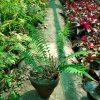
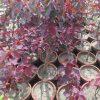
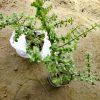

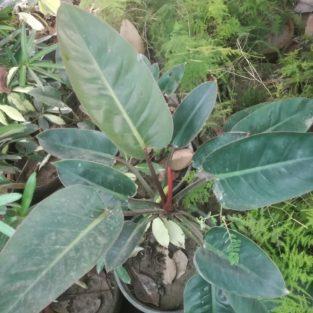
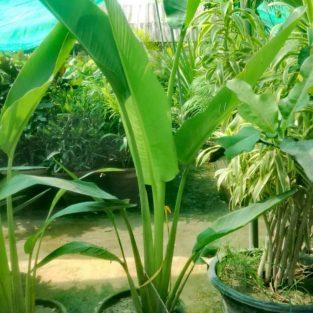
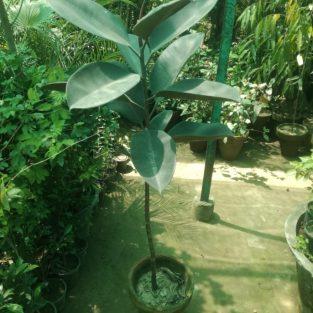
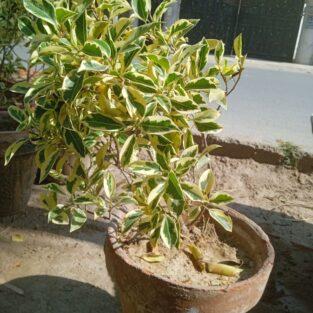
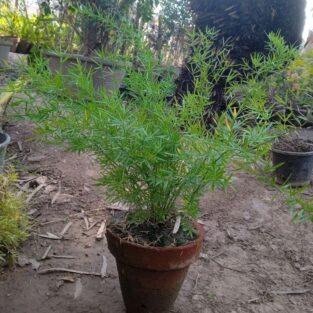
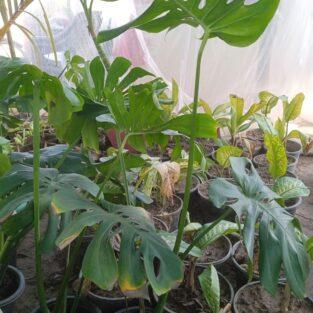
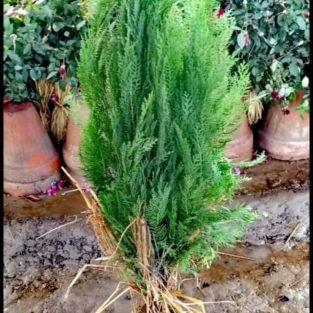
Reviews
There are no reviews yet.